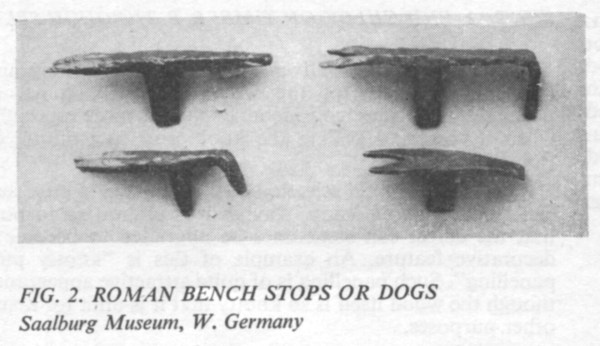
To amuse ourselves, Jeff Burks, Suzanne Ellison and I have been trying to find the earliest extant holdfast or the earliest image of one. We’ve gone way back, but the trail goes dead in Roman times. We have people saying the Romans had holdfasts, but we have yet to see one in a museum or image.

W.L. Goodman, the author of “The History of Woodworking Tools,” wrote “sometimes the Romans used an L-shaped iron hold-fast, and for planing, serrated dogs or bench stops” in a September 1964 article for The Woodworker magazine.
Download the full article here.
Goodman_on_benches
Robert Ulrich, the author of “Roman Woodworking,” describes a device that could be a holdfast or a pinch dog, but it’s likely a pinch dog. See these images from the British Museum.

I’m suspect the Romans had holdfasts, which is why I keep looking. (It’s something to do after I’ve had a couple beers and shouldn’t operate machinery.) There’s a 18th-century copy of a Roman fresco (which we think is now destroyed) that shows a holdfast. That image (above) is from “Le Antichità di Ercolano, Volume 1,” by Tommaso Piroli (engraver) 1789.
Here’s Jeff’s translation of the image’s accompanying text:
The other involves a curious painting expressing two genii, engaged in the art of the Joiner. The plank with a toothed iron for stopping the boards, a saw, a hammer, a box for storing other instruments of the art are to be seen in the workshop. On the wall a shelf with a vase from the oglio likely to grease the blade. What the above mentioned two genii Joiners were meant to indicate that inclination arose also called the genius of their respective crafts.
So if you see one when you are touring Roman ruins or European museums (which have hordes of Roman artifacts) this summer, let us know.
— Christopher Schwarz